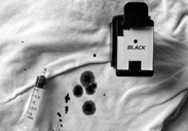Refiller cuts ink costs by over 90 percent with an InkTec refill kit—but are the savings worth the hassle?
I'm a serial refiller, and this is my story. We serial refillers work in the privacy of a garage or bathroom. Our tools are simple but effective. We buy bulk ink and pump it into the same cartridge, over and over again. We wouldn't dream of buying brand-name ink cartridges for our printers; we know that the cheapest way is to handle the task ourselves.
I became a serial refiller when I realized that my printer's ink cartridges cost more per milliliter than human blood or Russian caviar. I started shopping around, and I realized that cheaper alternatives are available for anyone willing to get their hands dirty—or willing to pay someone else to do the messy work.In this article, I'll talk about my experiences using an ink refill kit. The kit in particular is from InkTec. My test printer is an HP Photosmart e-All-In-One (), which uses HP 60 or 60XL (high-capacity) black and tricolor cartridges.
For each refill experiment, I'll start with a new set of OEM cartridges, drain them, and then use them for the refill or remanufacture. I'll print a set of pages, ranging in content from plain text to a full-size color photo, over and over again until the ink starts to run out (blank streaks appear on the page). I'll count the number of pages that I was able to print before streaks appeared. I'll also compare the print quality of the pages using third-party ink versus OEM cartridges.
While my experiences won't apply directly to other printers, they will give you a taste of what to expect. And then maybe you'll become a serial refiller, just like me.
Bottom line: If you're a do-it-yourselfer who doesn't mind a little spilled ink once in a while, the InkTec Refill Kit is a dirt-cheap alternative to pricey printer cartridges. In my experience, it cost over 90 percent less than the OEM inks did.
My printer needed two kits to get started: the $13 black ink package, and the $17 color set, which includes individual ink refills for cyan, magenta, and yellow.
The InkTec kits have everything you need to inject fresh ink into a depleted cartridge, including one or more injection needles (depending on the kit), a pair of plastic gloves to protect your hands, and a suction syringe to clean the cartridge nozzles. Protect your workspace from splatters with paper or plastic covering, and keep a few rags handy to soak up spilled ink.
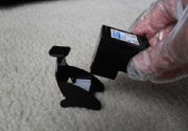
First, remove the ink cartridge from the printer and insert it in the refill clip, which secures the cartridge during the ink-injection process.
The InkTec kit includes a sticker that affixes to the top of the ink cartridge and has a dot to indicate the hole (manufactured into the cartridge by HP) for refilling. The syringe (attached to a refill tank) goes in the cartridge hole marked by the black dot. The color cartridge's refill process requires a separate injection for each color.
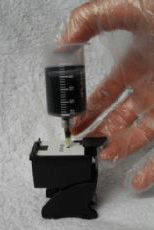
Ready, set, squirt
The process can get messy. My first attempt to refill the cyan tank resulted in an overflow. I quickly dabbed the excess ink with a rag, glad that no cyan ink dripped into the magenta or yellow tanks.After refilling, I used the suction syringe to drain a little ink from a rubber hole on the bottom of the refill clip. This step cleans the cartridge nozzles.
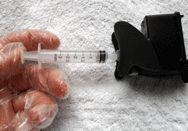
High print quality, low cost per page
Although the InkTec refill process was messy, the results were surprisingly good. I couldn't tell the difference between the pages I printed using the OEM inks and those using the InkTec refill inks. In the samples, colors were vibrant and matched perfectly. Similarly, text from both samples was sharp, with no banding or streaking. I didn't test durability over time, but I did drip a little water on an OEM sample page and an InkTec sample page; each suffered the expected streaking and color bleeding, but the third-party ink fared no worse than HP's house brand.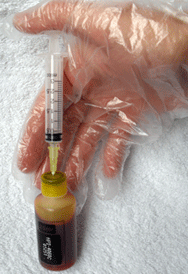
Refill caveats
